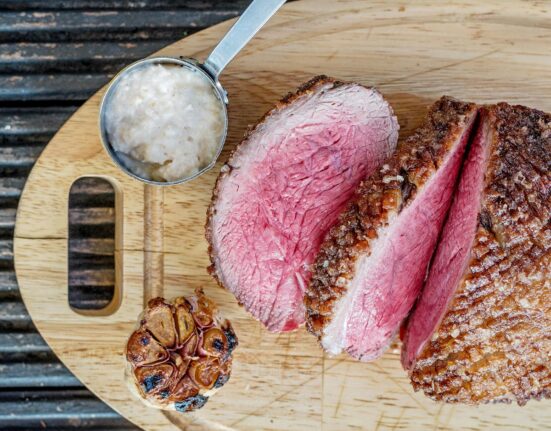Fad diets come and go, but a few have stuck around long enough to earn serious attention. Keto, Paleo, and Mediterranean diets dominate headlines, each promising weight loss, better health, and more energy. Yet with so much hype, it’s hard to know which one actually works for real life—not just Instagram aesthetics.
This post cuts through the noise, comparing these three diets without sugarcoating the facts. You’ll see how they stack up in terms of science, sustainability, and actual results. No fluff, no agendas—just the truth about what these diets can (and can’t) do for you.
The Science Behind the Diets
These three diets—keto, paleo, and Mediterranean—aren’t just passing trends. Each is built on solid scientific principles, deeply rooted in nutrition research or historical patterns of eating. Understanding their foundations helps you decide which one aligns with your goals.
Keto: Burning Fat for Fuel
The ketogenic diet flips the script on your metabolism. It’s based on swapping carbs for fats, pushing your body into ketosis—a state where it burns fat for energy instead of glucose. Here’s how it works:
- Macronutrient breakdown: 70-80% fat, 20-25% protein, 5-10% carbs.
- Process: By severely limiting carbs (often under 20-50g daily), your liver turns fat into ketones, fueling your brain and muscles.
- Origins: Developed in the 1920s to treat epilepsy, today’s keto diet is a tweaked version for weight loss and metabolic health.
It’s not just about bacon and butter, though. Quality matters—avocados, nuts, and olive oil outperform processed fats long-term.
Paleo: Eating Like Our Ancestors
Paleo takes cues from the diets of hunter-gatherers, avoiding anything that wasn’t around before farming. No grains, no dairy, no refined sugars—just whole, unprocessed foods.
Key principles:
- Whole foods first: Meat, fish, vegetables, fruits, nuts, and seeds dominate.
- Elimination focus: Removes legumes, grains, and processed foods to mirror pre-agricultural eating.
- Science angle: Proponents argue modern diets cause inflammation, and paleo cuts triggers like gluten and excess sugar.
Think of it as a nutritional reset button, prioritizing foods our ancestors thrived on for millennia.
Mediterranean: A Heart-Healthy Lifestyle
Unlike keto and paleo, the Mediterranean diet isn’t about strict rules—it’s a pattern of eating linked to longevity and heart health. Originally observed in regions like Greece and southern Italy, it’s backed by decades of research.
The pillars:
- Plant-based fats: Olive oil, nuts, and seeds replace butter and margarine.
- Moderate protein: Fish and poultry take center stage over red meat.
- Whole grains and wine: Yes, bread and red wine (in moderation) are included.
Studies repeatedly tie this diet to lower risks of heart disease, diabetes, and cognitive decline. It’s less a “diet” and more a sustainable way of living.
Nutritional Breakdown
Every diet has its own blueprint for balancing carbs, proteins, and fats. These macronutrients shape how your body performs, from energy levels to metabolic health. Below, you’ll see how keto, paleo, and Mediterranean diets allocate nutrients—and what’s actually on the plate.

Photo by Gustavo Fring
Keto: The High-Fat Approach
Keto throws the standard food pyramid out the window. It’s built on one rule: fats dominate. Carbs are the enemy, proteins play supporting roles, and fats fuel everything.
- Macros: 70-80% fat, 20-25% protein, 5-10% carbs.
- Key foods: Avocados, olive oil, butter, fatty fish (like salmon), nuts, and cheese. Even some veggies make the cut—think spinach and zucchini, not potatoes.
- Reality check: Fruit is rare (too sugary), and grains are banned. Every meal is a fat-first equation, often with bacon and eggs for breakfast, steak with butter for dinner.
It’s not just about quantity. The type of fat matters. Processed oils lose to coconut oil and grass-fed butter in this world.
Paleo: Protein and Plants
Paleo doesn’t count macros as strictly as keto, but the focus is clear: protein and plants lead. Carbs come from vegetables and fruit, not bread or pasta.
- Macros: Roughly 30% protein, 30% fats, 40% carbs—but this varies.
- Key foods: Lean meats (chicken, grass-fed beef), fish, eggs, leafy greens, berries, sweet potatoes, and seeds like almonds and chia.
- No-gos: Dairy, grains, and anything processed. Even beans are off-limits, a sore spot for vegetarians.
Picture a plate with grilled chicken, roasted Brussels sprouts, and a handful of walnuts. That’s paleo in action—simple, whole, and designed to mirror primal eating.
Mediterranean: Balanced and Varied
Unlike the other two, the Mediterranean diet doesn’t obsess over macronutrient math. It’s about patterns, not percentages.
- Macros: 40% carbs, 30% fats, 30% protein—but flexibility reigns.
- Key foods: Olive oil, whole grains (like farro and quinoa), fish, fresh veggies, legumes, and moderate wine. Dairy appears as yogurt or cheese, not butter.
- No restrictions: Bread and pasta stay, but they’re whole-grain and paired with veggies or beans. Think grilled sardines on sourdough with tomato salad, not fettuccine Alfredo.
Here, balance rules. Meals swing between Greek salads with feta and lentil soups, all drizzled with olive oil. It’s less about cutting food groups and more about crowding out junk with real ingredients.
Health Benefits and Risks
Each diet promises transformative health results, but they’re not without trade-offs. Some excel in short-term fixes, while others shine for lifelong wellness. Here’s what the research says about their benefits—and the risks lurking beneath the surface.
Keto: Rapid Weight Loss vs. Long-Term Concerns

Photo by Cup of Couple
Keto’s star power lies in its ability to shed pounds fast. By switching your body to fat-burning mode, it can drop water weight and reduce appetite almost overnight. Beyond weight loss, studies link keto to:
- Improved blood sugar control, making it popular for type 2 diabetes management.
- Reduced triglycerides, a win for heart health in the short term.
- Potential brain benefits, with early research suggesting it may help with epilepsy and neurodegenerative diseases.
But the downsides are hard to ignore:
- Nutrient gaps: Skimping on fruits, whole grains, and legumes can mean missing fiber, vitamins, and antioxidants.
- Keto flu: Headaches, fatigue, and brain fog hit many in the first weeks as the body adapts.
- Sustainability: Long-term adherence is tough. For some, the high-fat focus raises cholesterol levels over time.
The keto diet works like a metabolic reset button—powerful but not meant to stay pressed forever.
Paleo: Natural Eating with Limitations
Paleo’s strength is its emphasis on whole, unprocessed foods. Cutting out refined sugars and grains can lead to:
- Steady energy levels without the crashes from sugar spikes.
- Reduced bloating and inflammation, especially for those sensitive to gluten or dairy.
- Higher protein intake, which supports muscle maintenance and satiety.
Yet its restrictions can backfire:
- Calcium and vitamin D deficits from avoiding dairy, unless you load up on leafy greens and supplements.
- Cost and convenience: Grass-fed meats and organic produce aren’t cheap or easy to find.
- Social challenges: Saying no to bread, beans, or even hummus at gatherings can feel isolating.
Paleo mimics a time before factories and fast food—but modern life sometimes demands compromises.
Mediterranean: A Gold Standard for Longevity
Decades of research crown the Mediterranean diet as a champion for lifelong health. Its balance offers:
- Heart disease prevention, credited to olive oil’s monounsaturated fats and omega-3s from fish.
- Lower risk of diabetes and cognitive decline, thanks to antioxidant-rich vegetables and whole grains.
- Flexibility: Unlike keto or paleo, it doesn’t villainize entire food groups, making it easier to maintain.
The catch?
- Slower weight loss: Without strict rules, results aren’t as dramatic for those seeking quick fixes.
- Portion control matters: Wine and pasta are allowed, but overdoing them undoes benefits.
This isn’t a diet—it’s a lifestyle. And for many, that’s the secret to sticking with it.
Practicality and Lifestyle Fit
A diet isn’t just about what you eat—it’s about how it fits into your life. The best meal plan won’t work if it clashes with your schedule, budget, or social life. Let’s break down how keto, paleo, and Mediterranean diets stack up in the real world, beyond the nutrition labels.
Keto: Strict Rules for Measured Results

Photo by Mikhail Nilov
Keto doesn’t mess around. To stay in ketosis, you’ll measure every gram of carbs, scrutinize restaurant menus, and say no to office birthday cake. The payoff? Rapid fat loss. The trade-off? A lifestyle that demands discipline.
Practical challenges:
- Cost: Organic butter, grass-fed meats, and avocado oil add up fast. Keto is a premium diet, with low-quality processed fats being the only “budget” option.
- Social hurdles: Dining out means asking for no bread, no rice, no sauce—essentially, reinventing every dish on the spot. Even family dinners become negotiations.
- Time investment: Tracking macros isn’t optional. Unless you enjoy mental math with every snack, apps like MyFitnessPal become your sidekick.
Imagine a work trip where airport food is all sandwiches and muffins. Keto turns simple meals into scavenger hunts for cheese sticks and almonds.
Paleo: Simple but Restrictive
Paleo’s ingredient list is straightforward—until you realize grains, beans, and dairy are off-limits. It’s a diet built for home cooks, not fast food lines.
Everyday realities:
- Grocery bills spike: Grass-fed beef and wild-caught fish cost more than conventional options. Even almond flour is pricier than wheat flour.
- Minimal convenience: Forget grabbing a protein bar or yogurt on the go. Paleo-approved snacks require planning, like hard-boiled eggs or pre-cut veggies.
- Dining out drama: Sushi without rice? Burgers without buns? Paleo turns shared meals into a series of substitutions.
Picture a potluck where everyone brings pasta salad or pizza. Your sweet potato and grilled chicken skewers might feel out of place, no matter how good they taste.
Mediterranean: Flexible and Enjoyable
The Mediterranean diet thrives in the real world because it’s designed for it. There’s no carb counting, no banned food groups—just an emphasis on fresh, flavorful ingredients.
Why it works:
- Budget-friendly: Canned sardines, lentils, and seasonal veggies keep costs low. Even olive oil, the star ingredient, stretches further than specialty oils.
- Socially seamless: Restaurants always have grilled fish, salads, and whole-grain options. Wine is encouraged (in moderation), making it happy-hour approved.
- Low maintenance: No apps or scales needed. Meals follow a simple formula: veggies + whole grains + healthy fats + lean protein.
Think of a weeknight where you toss whole-wheat pasta with cherry tomatoes, olives, and a drizzle of olive oil. It’s fast, cheap, and fits the plan without stress.
Each diet has its own rhythm. Keto demands precision, paleo prizes purity, and Mediterranean embraces balance. The best one isn’t the most effective on paper—it’s the one you’ll actually stick with.
Which Diet Is Right for You?
With all this information, how do you choose? Keto, paleo, and Mediterranean diets each have strengths and weaknesses. The best one depends on your goals, lifestyle, and what you enjoy eating.
Match a Diet to Your Goals
Not sure where to start? These guidelines help narrow it down:
- Keto: Fast weight loss, blood sugar control, or metabolic reset. Ideal if you’re okay with strict tracking and love high-fat foods. Avoid it if you hate counting carbs or crave fruit and grains.
- Paleo: Cutting inflammation, clean eating without processed foods. Works if you prefer meat and veggies, don’t mind skipping dairy and grains, and have time to cook. Less flexible for dining out.
- Mediterranean: Long-term heart health, balanced nutrition, and sustainability. Fits if you want flexibility, enjoy fish and olive oil, and don’t want to give up bread or wine. Slower for weight loss.
Listen to Your Body
Diets aren’t one-size-fits-all. Pay attention to how you feel:
- Energy slumps after meals? Try fewer carbs—maybe keto or paleo.
- Bloated or achy? Paleo’s anti-inflammatory approach might help.
- Craving variety? Mediterranean’s mix of grains, veggies, and fats keeps meals interesting.

Photo by Yaroslav Shuraev
When in Doubt, Ask a Pro
Before jumping in, talk to a doctor or dietitian:
- Keto can affect cholesterol and isn’t safe for everyone.
- Paleo may lack certain nutrients if not planned well.
- Mediterranean is generally safe but might need tweaks for weight loss.
No diet is perfect. The right choice is the one you can stick with—without making life miserable.
What matters most isn’t trends, but what works for you.
Conclusion
Diets aren’t trophies to win—they’re tools to match your life, not the other way around. Keto burns fast, paleo strips back, and Mediterranean builds slow. None work if they feel like punishment.
Steal the best from each. Try keto’s fat focus for energy, paleo’s clean eating for digestion, or Mediterranean’s balance for long-term ease. Mix, tweak, and listen to your body. No rule says you can’t blend avocado toast with grilled salmon or swap pasta for zucchini noodles on heavy days.
Your diet should fit like your favorite jeans—comfortable, reliable, and uniquely yours. Start small. Roast vegetables in olive oil tonight, skip the bread tomorrow, or try a week without sugar. Progress beats perfection every time.
Now, go eat something that makes you feel good. Your body will thank you.








